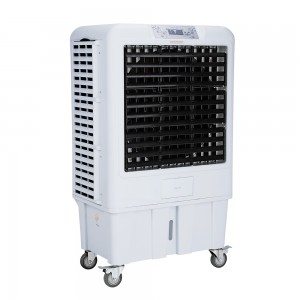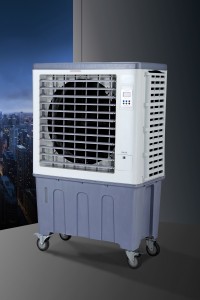Portable air coolers, also known as water air coolers, evaporative air coolers or swamp coolers, are a popular choice for cooling small spaces and outdoor areas. These devices use evaporative cooling principles to reduce air temperature, providing a cost-effective and energy-saving cooling solution.
So, how does a portable air cooler work? The process begins with an air cooler drawing warm air from the surrounding environment. This warm air passes through a series of wet pads or filters inside the cooler. The pads are kept moist via a water reservoir or a continuous water supply, which is a key component of the cooling process.
As warm air passes through a moist mat, the water evaporates, absorbing heat from the air and lowering the temperature. The cooled air is then circulated back into the room or space, providing a fresh and comfortable environment. This process is similar to the way our bodies cool down when we sweat – as water evaporates from our skin, it removes heat and cools us down.
One of the main advantages of portable air coolers is their energy efficiency. Unlike traditional air conditioners that rely on refrigerant and a compressor to cool the air, air coolers only use water and a fan to create a cooling effect. This reduces energy consumption and environmental impact, making it a more sustainable cooling option.
Additionally, portable air coolers are easy to use and maintain. They are often equipped with wheels or handles for easy movement and can be used in a variety of settings, from homes and offices to outdoor patios and workshops.
In summary, portable air coolers cool and humidify the air by harnessing the power of evaporation. Their simple yet effective design, coupled with energy efficiency and portability, make them a practical choice for anyone looking to beat the heat in a cost-effective and environmentally friendly way.
Post time: Jun-20-2024





